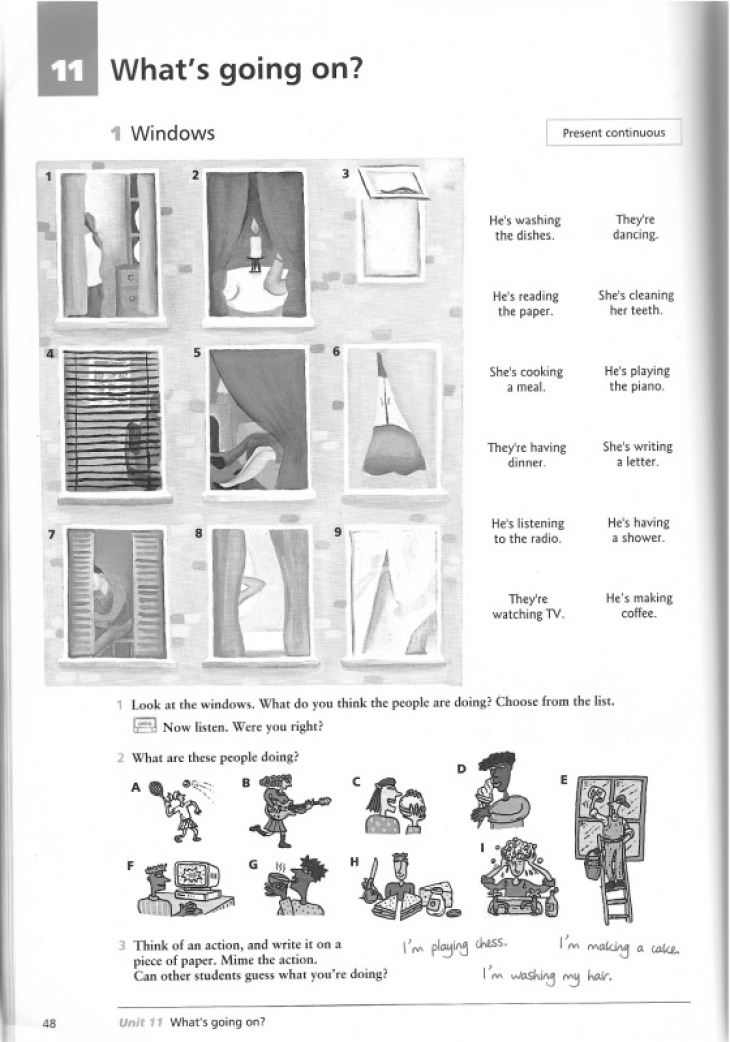- Overview
- The ECRIF Stages
- Learning-Centered Thinking
- Planning with ECRIF
- ECRIF and Coursebooks
- More Resources
- Contact us
- About us
Sample 1
Language In Use Beginner. Cambridge University Press
Sample 2: Intermediate (Job related vocabulary)
Sample 3: Upper Intermediate (Past tenses and Past Perfect)
Look at the following textbook sample. As you look at the activities, think about the ECRIF questions. What seems to be the aim of each activity? What gaps do you notice? What would you keep, reject, add or change?
Note: We encourage you to do this activity yourself and then compare it to our commentary/analysis, which is below.
Language In Use Beginner. Cambridge University Press
Sample 2: Intermediate (Job related vocabulary)
Sample 3: Upper Intermediate (Past tenses and Past Perfect)
Look at the following textbook sample. As you look at the activities, think about the ECRIF questions. What seems to be the aim of each activity? What gaps do you notice? What would you keep, reject, add or change?
- How will students encounter the target language? In what context? How can I provide them with opportunities to activate their prior knowledge and fluency?
- How will student clarify the form, meaning, and use of the target language?
- How will students remember/internalize the target language?
- What communicative tasks will provide students opportunities to fluently use the target language?
Note: We encourage you to do this activity yourself and then compare it to our commentary/analysis, which is below.
Our commentary is below.
What’s Going On: Present Continuous
(Language In Use: Beginner. Cambridge University Press
The initial matching activity provides some context (ex. observing people, describing pictures) that could help the studentsencounter and clarify the meaning of the present continuous. I also think that the creative aspect of not seeing the complete picture of people might even help some students begin to remember and internalize the sentences. The listening activity can help students clarify the meaning by giving the correct answers and possibly helping them encounter and clarify the pronunciation. I would want to add some other activities here to be sure that they encounter (i.e. really notice!) and clarify the pronunciation. The sentences also could help the students E/C the grammar pattern with different subjects, but I would add an activity like a gap fill that helped them E/C/R is, am, are + -ing. A chart on the board might also help them C/R that.
In addition, I think that students might need more activities to be sure they clarify the meaning of the present continuous (Timelines? Concept check questions? Matching time phrases like ‘now’ ‘at the moment’ ‘everyday’ ‘on Tuesdays’ to distinguish present simple and continuous.)
The last two activities could help the students remember and internalize the present continuous. However, I think that students would need more opportunities to internalize and fluently use the target language. Therefore, I might add a fluency activity at the end in which they describe pictures to each other and find differences or draw. That activity could be recycled in the next one or two lessons, too.

